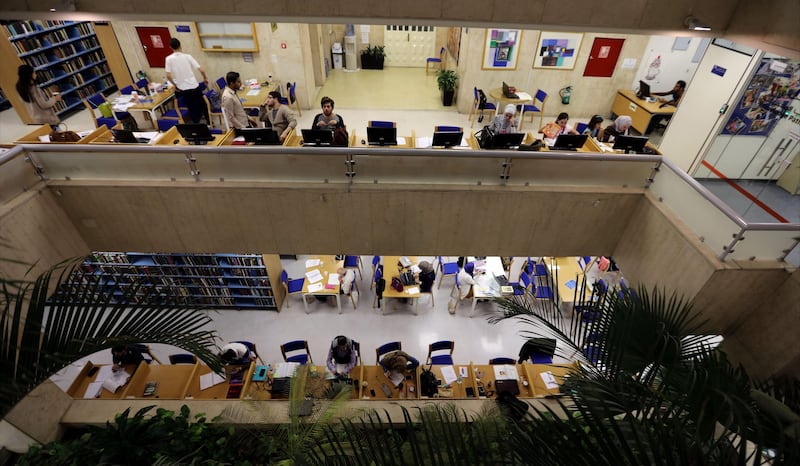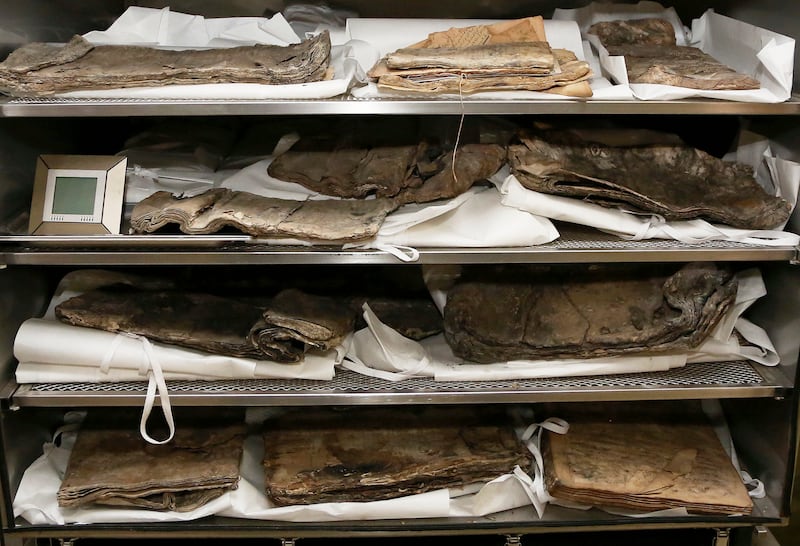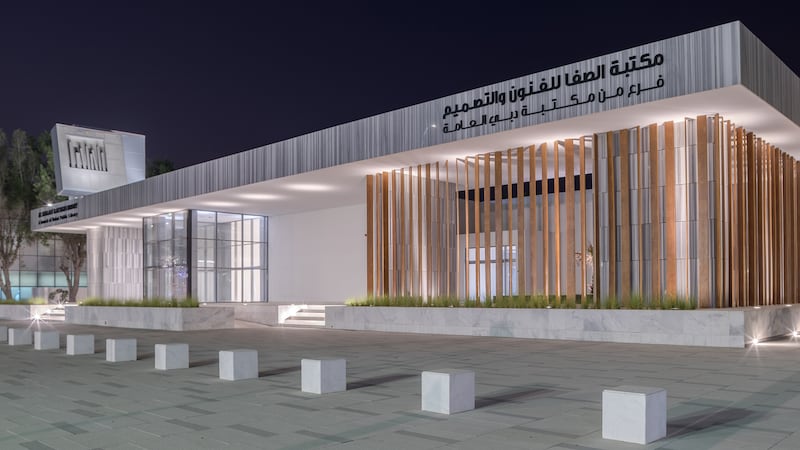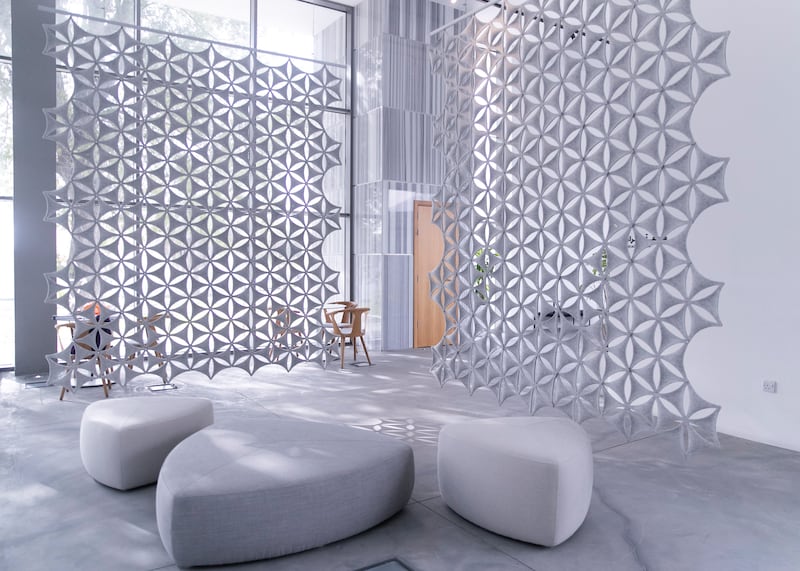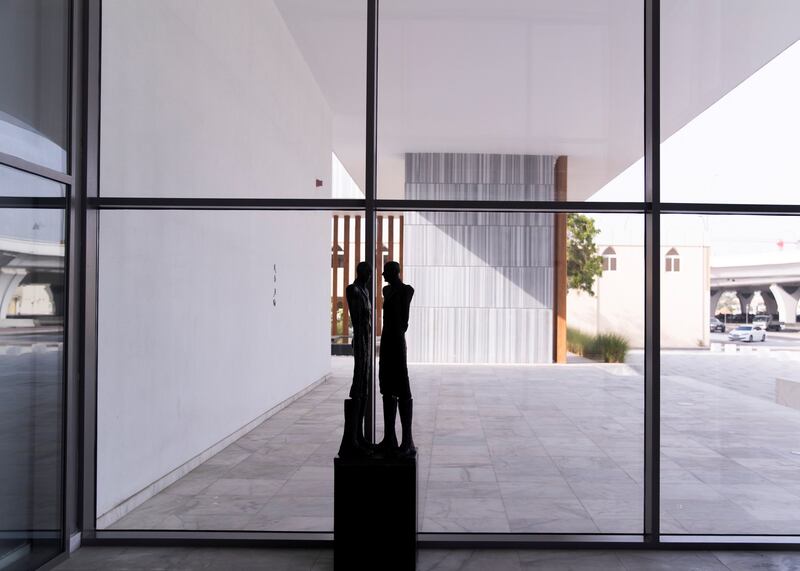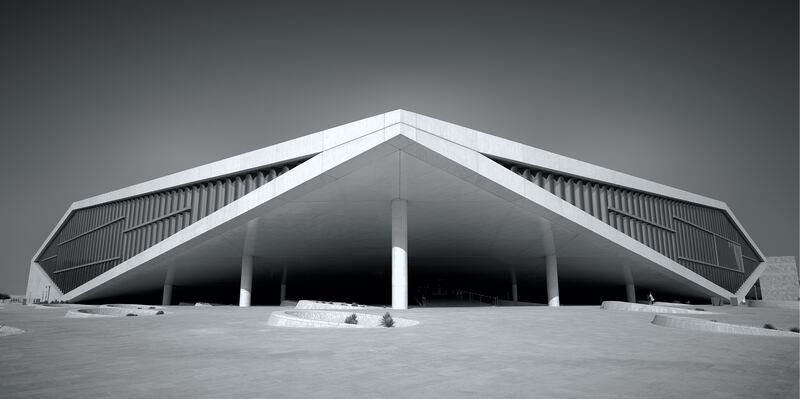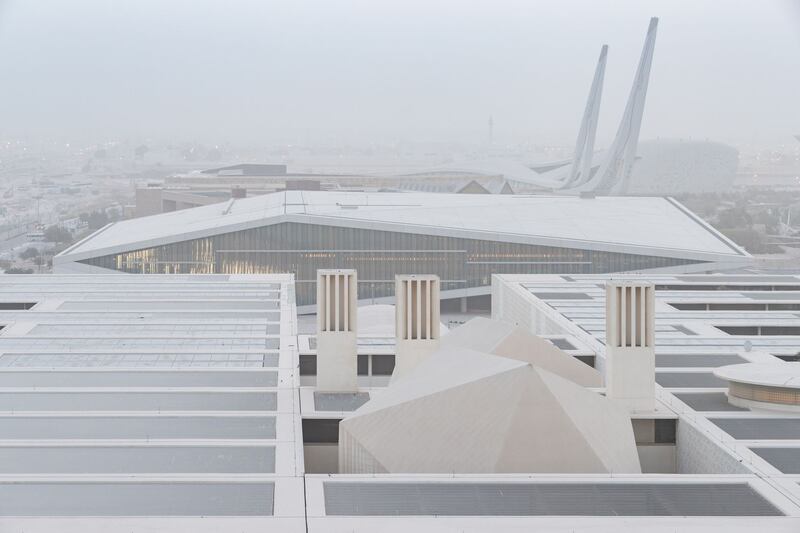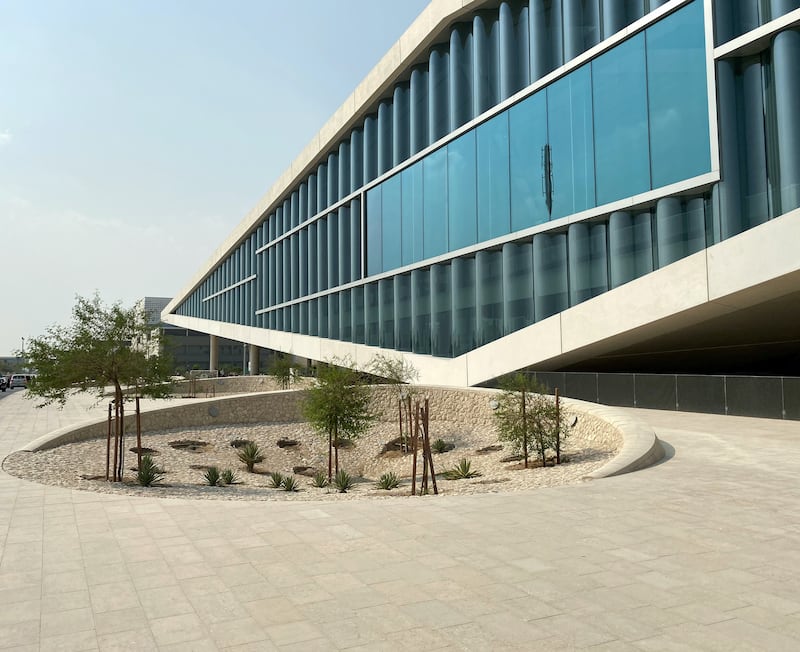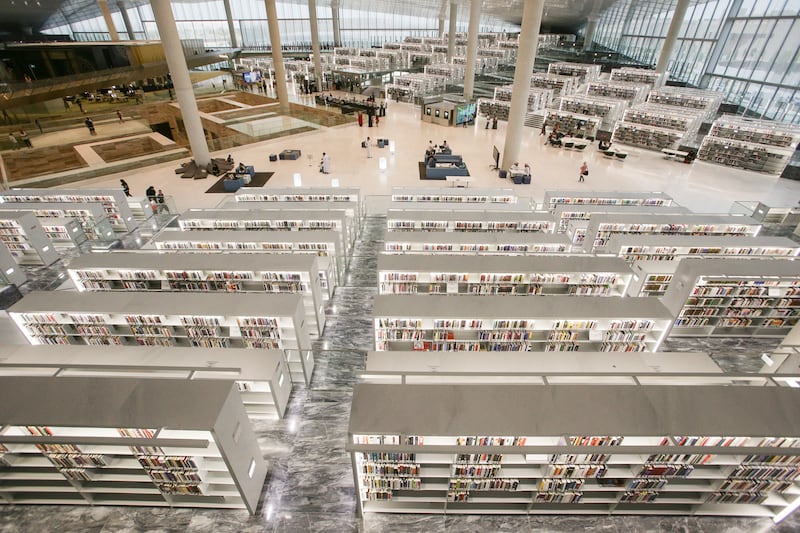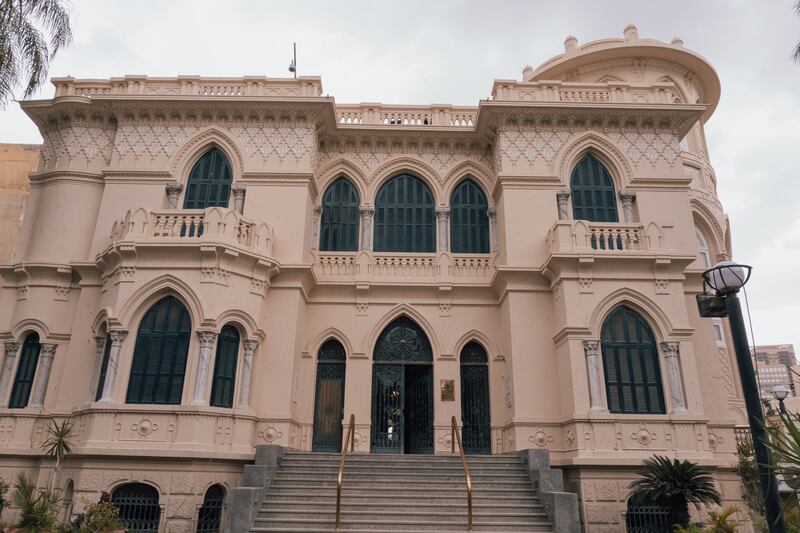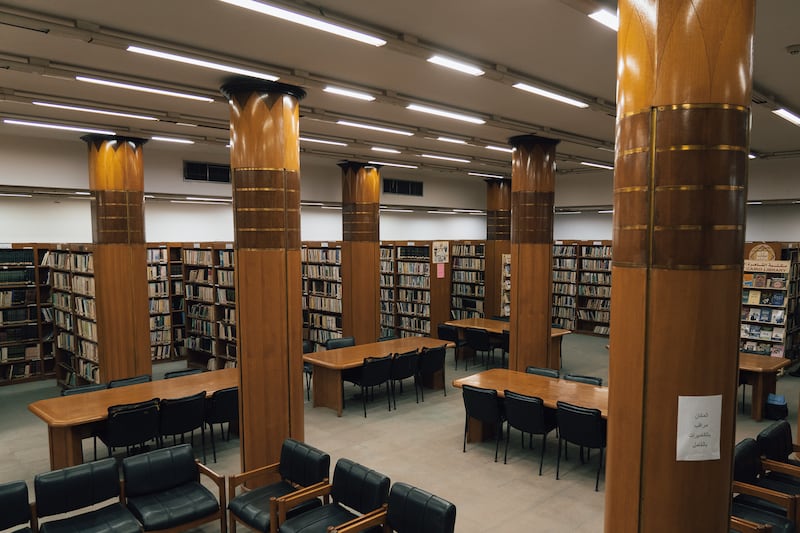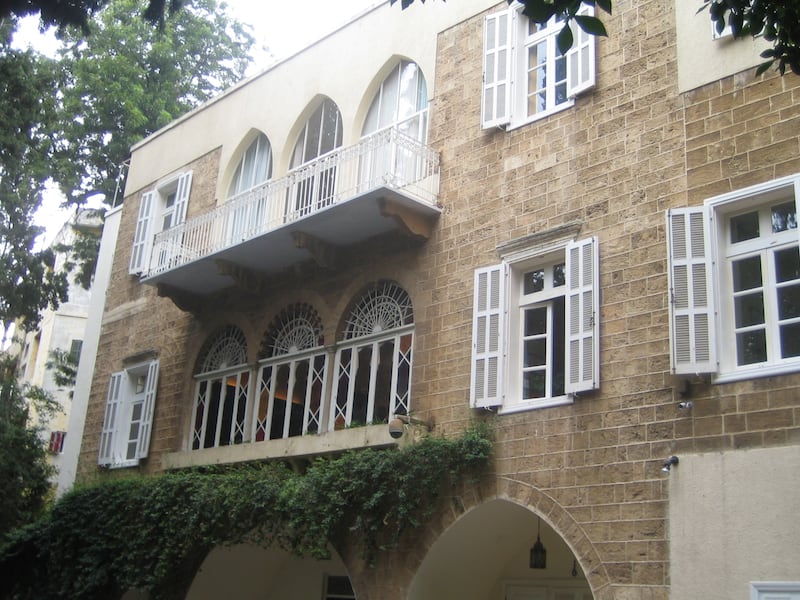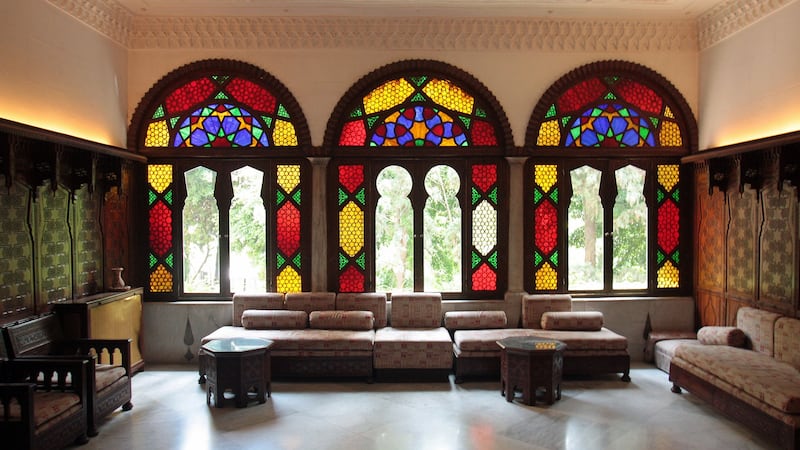The Abbey Library of Saint Gall in Switzerland, the Stadtbibliothek Stuttgart in Germany or Tianjin Binhai Library in China, these are a few examples of some of the most striking libraries around the world.
But you don't have to look far to find there are similar rich spaces in the Middle East too.
The National team has compiled a list of some of the most remarkable libraries in the region.
The library of the Orient-Institut Beirut (Lebanon)
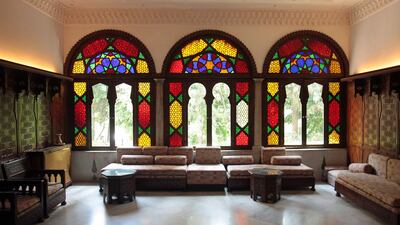
Tucked away behind a busy roundabout in the centre of the Lebanese capital, the library of the Orient-Institut Beirut is housed in a spectacular 19th-century Ottoman villa. The hall comprises a traditional Arab reception room with original wood panelling on the walls and high tainted glass windows that were heavily damaged in the port blast on August 4, 2020. A year and a half later, the structure now stands fully repaired.
Orient-Institut's director Birgit Schabler told The National that the library is probably the largest humanities library in the country. It holds more than 140,000 volumes and around 2,000 journals besides an increasing number of electronic resources.
“Among the holdings are special collections on Lebanon and the Armenian diaspora in the Middle East, a collection of old and rare books, a letter collection, and a collection of maps particularly of Beirut and Lebanon and the broader region,” head librarian Hans-Peter Pokel said.
Founded in 1961, the Orient-Institut is an independent academic research institute that belongs to the Max Weber Foundation, a Bonn-based humanities foundation funded by the German government.
By Sunniva Rose, Beirut Correspondent
The National Archives (Iraq)
Iraq’s National Archives, previously called the National Library, was founded in Baghdad in 1920. Muriel Jesse Forbes took the initiative to start the library with the help of Gertrude Bell, the British High Commissioner's oriental secretary at the time.
Initially, it was a subscription-only library financed by donations of money and books. The National Library and Archives, which was right across from the Ministry of Defence, was torched and plundered in April 2003. Saad Eskander, the director-general of the National Library, later gave a report on the devastation. He mentioned that library workers were directed three days before the assault to delete all archival documents relating to the Ba'athist authority.
The library and archives were said to have held 417,000 books, including 2,618 periodicals stretching from the late Ottoman era to modern times, and 4,412 rare books and manuscripts before being destroyed. The library has since then been renovated and reopened to the public.
By Haider Husseini, Baghdad Correspondent
Abdul Hameed Shoman Foundation Public Library (Jordan)
Part of the Abdul Hameed Shoman Foundation, this public library opened in 1986 in Jabal Amman as the first fully equipped and computerised public library in Jordan. Today, the library includes a cinema space, a children's library and a cafe.
The Library also has subscriptions to a number of databases that include articles, periodicals and books, as well as an electronic platform that allows its members to borrow e-books, too. What is significant about the space today is that it serves as a venue for a number of cultural activities, including book signings, workshops and film screenings.
By Samia Badih, Arts Editor
The Greater Cairo Library (Egypt)

Overlooking the Nile on the eastern bank of the island district of Zamalek sits the Greater Cairo Public Library, one of the city’s largest. Housing more than 170,000 books and two million audiovisual materials (CDs, DVDs and microform), the palace that the library is housed within has a particular historical significance, having been previously owned by Princess Samiha Kamel, the granddaughter of Khedive Ismail who ruled Egypt as Sultan from 1863 to 1879.
It is one of the most popular locations among the city’s bookworms, who love the spaciousness of its study rooms, which overlook the Nile. Unlike other libraries, it does not allow books to leave the premises, however, visitors can make copies on site. It is also a popular events venue, where lectures, seminars, conferences and performances regularly take place.
Though it's much smaller than the iconic Bibliotheca Alexandrina, the Greater Cairo Public Library's Khedival history fascinates its visitors.
By Kamal Tabikha, Cairo Correspondent
Al Safa Art & Design Library (UAE)
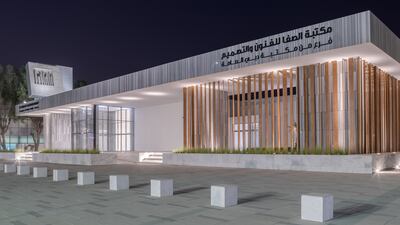
Al Safa Art & Design Library is one of Dubai’s most striking libraries, for its stylish architecture, open layout and its vast collection of art books.
Originally opened in 1989, the library reopened in 2019 as part of an initiative to refurbish the entire Dubai Public Library network. The Al Safa branch was the spearheading project and now serves as a benchmark for all public libraries in the emirate.
With its hard angles and restrained colour palette, the library stands as an emblem of modernity against the older, coral-coloured backdrop of Al Wasl. Its collection spans a variety of titles, from fiction to non-fiction, including books on art, design and business, as well as encyclopaedias and illustrated children's books.
At the centre of the library is a courtyard, constructed to accommodate various activities such as poetry recitals and movie nights. The library also features workshop and exhibition spaces as well as a children’s area, with its own library, “media room” and a small cinema space.
Other significant libraries in the UAE include House of Wisdom in Sharjah, Mohammed bin Rashid Library in Dubai and Qasr Al Watan Library in Abu Dhabi.
By Razmig Bedirian, Culture Writer
King Abdulaziz Public Library (Saudi Arabia)
King Abdulaziz Public Library was founded in 1999 in Riyadh. The building spans an area of 26,000 square metres and cost $40 million. The public library, which has separate men and women’s sections, was the first to give access to women, and is "equipped with integrated components and employing the techniques of modern information science".
The library is focused on spreading knowledge about Arabic and Islamic heritage and the history of the kingdom of Saudi Arabia and its founder King Abdulaziz.
The library has a rare collection of more than 7,000 Arab and Islamic coins, 700 maps dating from 1482 and photographs dating from 1740. It is also home to the private library of American orientalist George Rentz.
The rare photography collection comprises 5,564 single original photographs taken by some of the most prominent photographers in the world. One of the largest publicly available Arabian cartographic collections belongs to the library.
Of particular interest is also the library's collection of several hundred maps of Arabia, centred on the 16th to 18th centuries. Since the library's foundation, "we were keen to build up a comprehensive collection of maps and charts of Arabia, so that this fascinating material could be made available to scholars and members of the public alike", said supervisor-general Faisal bin Muaammar.
By Mariam Nihal, Riyadh Correspondent
Qatar National Library (Qatar)
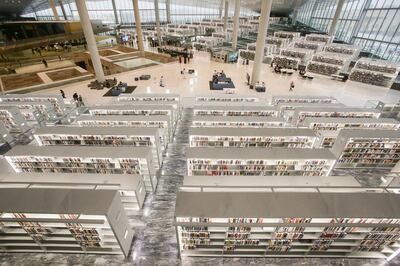
Designed by world-renowned architect Rem Koolhaas, the Qatar National Library is a massive 45,000 square-metre space with a distinct structure that features a glass facade. Inside, the layout of the shelves is central to the design and function of the library.
The library, which opened in 2018, is home to 800,000 books and more than 500,000 e-books, newspapers and magazines. Its digital archive allows access to thousands of rare records and photographs. According to Koolhaas, the library's design is conceived as "a single room which houses both people and books".
By Samia Badih, Arts Editor
Al-Qarawiyyin Library (Morocco)
Founded in 859 by Fatima Al Fihri of the Tunisian town of Kairaouan, Al-Qarawiyyin Library is said to be the world's oldest functioning library. Located in Fez, Morocco, the library reopened its doors to the public in 2016 for the first time after years of closure for renovations.
The library is home to a collection of manuscripts by renowned thinkers and philosophers from the region, including Ibn Khaldoun’s Muqaddimah, as well as a 9th-century Quran written in Kufic calligraphy, and a manuscript on the Maliki school of Islamic jurisprudence by Ibn Rochd, also known as Averroes.
By Katy Gillett, Features Editor
